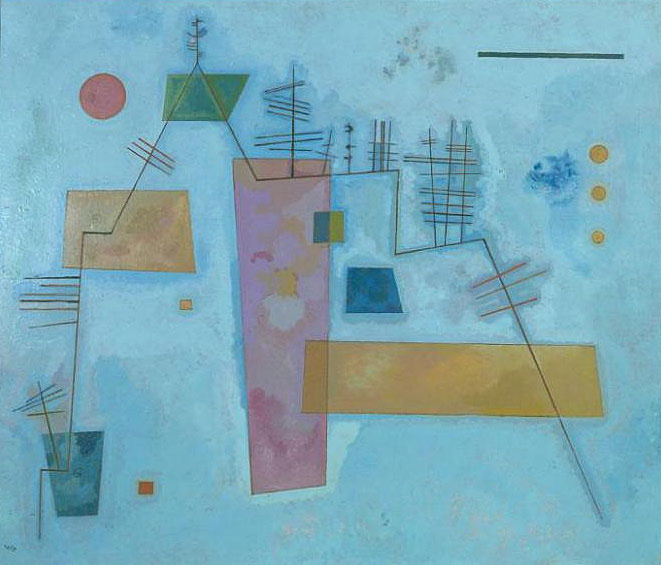log in
Enter site
Login to use Arthive functionality to the maximum
Angular Structure
Wassily Kandinsky • Painting, 1930, 60×69 cm
Description of the artwork «Angular Structure»
In 1930, when ‘Angular Structure’ was painted, Wassily Kandinsky taught at the famous Bauhaus School. He was invited there in 1922 by Walter Gropius, the founder of the school-workshop. Kandinsky was very close to his ideas, and he gladly accepted the offer, especially since his old friends and colleagues worked in Bauhaus. He teamed up with Paul Klee, Lyonel Feininger and Alexej von Jawlensky to form the so-called ‘Blue Four’, named in memory of the ‘Blue Rider’.
Kandinsky taught at the Bauhaus until 1933, when the art school was closed by the Nazis. Over this period, the artist together with his colleagues and students had to move from Weimar to Dessau, and later to Berlin. Despite the attacks and criticism from the right-wing parties, the Bauhaus has continued its work. Kandinsky inspired his students to express themselves creatively, because he was inspired himself. Kandinsky taught the courses of analytical drawing, fundamentals of artistic design and, perhaps, the most important and valuable for him, the color theory course.
The period when the artist worked at the Bauhaus was perhaps the most productive in his career. In 1926, Kandinsky wrote one of the most influential books in the history of modern art, “Point and Line to Plane”. His monumental, perfectly geometric "Composition VIII", which marked the dawn of a new phase in his artwork, was also painted there. And if in the beginning of this period the works of Kandinsky had been strongly influenced by the ideas of Suprematism and Constructivism, after moving to Dessau, his paintings had new romantic sounding and mood. " “Angular Structure” is one of Kandinsky’s iconic paintings of those years. Peace and relaxation replaced strictly ordered compositions with a tense opposition of geometric forms. The compositions seem to have gained more air with the elements floating free.
Kandinsky taught at the Bauhaus until 1933, when the art school was closed by the Nazis. Over this period, the artist together with his colleagues and students had to move from Weimar to Dessau, and later to Berlin. Despite the attacks and criticism from the right-wing parties, the Bauhaus has continued its work. Kandinsky inspired his students to express themselves creatively, because he was inspired himself. Kandinsky taught the courses of analytical drawing, fundamentals of artistic design and, perhaps, the most important and valuable for him, the color theory course.
The period when the artist worked at the Bauhaus was perhaps the most productive in his career. In 1926, Kandinsky wrote one of the most influential books in the history of modern art, “Point and Line to Plane”. His monumental, perfectly geometric "Composition VIII", which marked the dawn of a new phase in his artwork, was also painted there. And if in the beginning of this period the works of Kandinsky had been strongly influenced by the ideas of Suprematism and Constructivism, after moving to Dessau, his paintings had new romantic sounding and mood. " “Angular Structure” is one of Kandinsky’s iconic paintings of those years. Peace and relaxation replaced strictly ordered compositions with a tense opposition of geometric forms. The compositions seem to have gained more air with the elements floating free.


